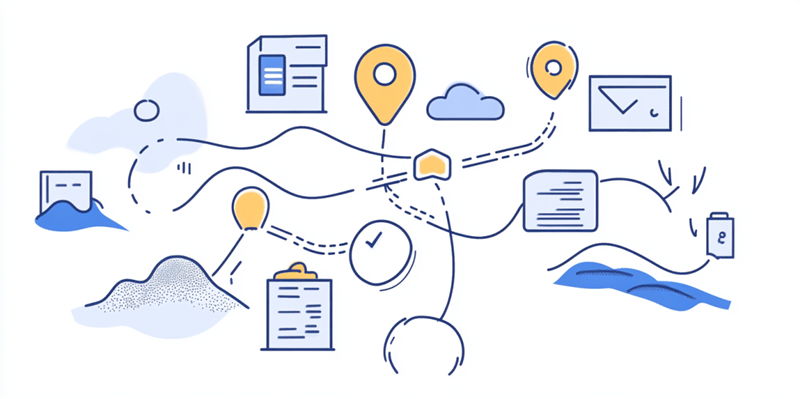At the Office of Customer Experience (OCX), we strongly believe that delivering outstanding experiences for both internal and external customers is essential. Last month we celebrated CX Day, which takes place on the first Tuesday of October every year. To honor this occasion, we’d like to shed light on one of the most impactful tools for enhancing customer interactions: journey mapping.
A journey map provides a visual depiction of a customer’s experience as they engage with an organization, service, or product. It highlights key touchpoints and interactions, helping us understand the customer’s perspective, anticipate their needs, and identify areas that require improvement. For the USDA, implementing journey mapping proves crucial for enhancing services in agriculture, nutrition, and rural development, ensuring that stakeholders have a seamless and effective experience.
Step 1: Choose a Specific Journey
The first step in creating a journey map involves selecting a specific journey to analyze, such as onboarding a new employee or assisting a customer with farm loans. This focused approach allows for a detailed understanding of that particular process. Once the journey is chosen, identify the personas involved in this journey. Understanding these personas helps in capturing their unique needs and expectations. Developing a persona involves researching demographics, behaviors, and goals.
Now document each interaction point customers have with the USDA during this journey. This includes both online and offline interactions. Note any difficulties or challenges customers encounter. Be sure to capture the emotions customers feel throughout these interactions, whether they are satisfied, frustrated, or confused. These emotional insights are crucial for addressing pain points and enhancing positive moments. Remember to collaborate with team members from different departments such as customer service and IT to gain a holistic view of the journey.
Step 2: Analyze the Journey and Prioritize Improvements
With the interactions and touchpoints mapped out, the next step involves analyzing the data collected. Look for common themes and patterns in the customer interactions and identify areas that require immediate attention. This analysis helps in understanding where the customer experience can be improved. Pay close attention to moments where customers feel frustrated or disengaged, as these are areas that can significantly benefit from enhancements.
Once the pain points and areas for improvement are identified, prioritize them based on their impact. Focus on changes that can provide the most significant improvements to the overall customer experience and efficiency. Implementing changes incrementally ensures that the most crucial areas are addressed first, providing immediate benefits to customers. Also, keep in mind that journey mapping is an ongoing process. Customer needs and expectations evolve over time, so it’s essential to frequently revisit and update the journey map.
Step 3: Foster Continuous Improvement
Journey mapping extends beyond being a single tool; it represents a comprehensive approach to understanding and improving customer experiences. By dedicating time to this process, the USDA can foster greater trust and satisfaction among its stakeholders. Encouraging departments to work together and share insights leads to more cohesive strategies aligned with customer needs. Regularly reviewing and refining journey maps ensures that strategies remain relevant and responsive to evolving customer expectations.
By committing to understanding and enhancing processes from the customers’ perspective, journey mapping can drive continuous improvement in customer experience at the USDA. Embrace this methodology to elevate interactions, ensuring every touchpoint contributes to a positive and effective experience. As journey mapping becomes an integral part of the USDA’s operations, the enhanced customer experience will reflect a well-coordinated and empathetic approach to service delivery.

